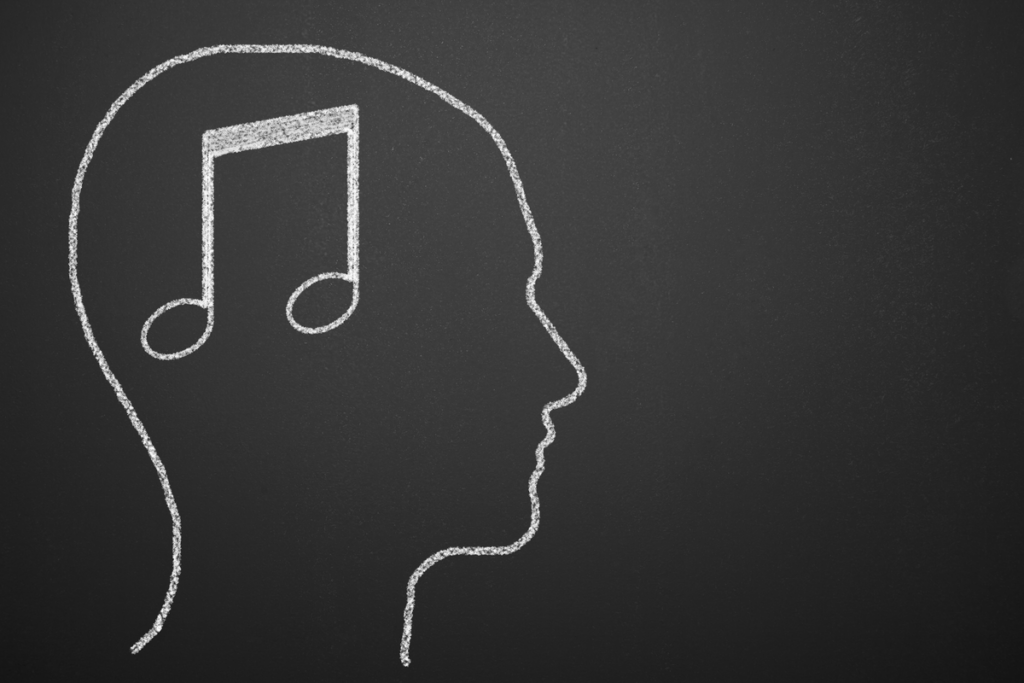Skin Orgasms, When Music Gives You Goosebumps

Have you ever experienced an almost transcendental state by listening to music? A feeling of goosebumps on your skin and butterflies in your stomach? If so, it’s possible that you’ve experienced what we call skin orgasms.
Many different experts have studied this phenomenon. Although it’s not related to the sexual sphere, it produces similar sensations. Furthermore, almost everyone can experience skin orgasms, whether or not you’re a music fan. Indeed, the experience they produce is so intense it’s impossible to ignore.
In this article, you can learn more about skin orgasms and how they occur. Therefore, if you’re curious about that intense moment of excitement you experience whenever you hear a particularly moving piece of music, you’ve come to the right place.
What are skin orgasms?
Experts claim that music can produce a transcendent psychophysiological experience. At this particular moment, the body experiences piloerection, tingling in the spine, and strong emotions. These moments are known as skin orgasms or frisson.
The term frisson was first coined in 2011. It was described as a psychophysiological response to rewarding auditory and/or visual stimuli that often induces a pleasurable or otherwise positively-valenced affective state and transient paresthesia (skin tingling or chills). In fact, this is considered the most accurate term to describe skin orgasms, since it integrates emotional intensity with verifiable non-localized somatic sensations.

The evolutionary role of music
Music is a universal language. Indeed, we all, regardless of our culture, origin, or language, might feel the same way when faced with a certain piece of music. In fact, in certain cultures music is seen as a tool that induces altered states of consciousness, like a trance.
The act of listening to music is intrinsically social. Consequently, factors such as staging and cultural context influence emotional reaction.
The social nature of music creation dovetails with evolutionary theories that position music as a mind-transforming technology. According to these theories, human-created sounds that originated as an emotional communication system may have gradually refined the human mind to treat music as an aesthetic experience.
How does a skin orgasm occur?
A work published in 2014 studied this intense sensation. In fact, the study evaluated the mechanisms that produce it. They are:
- Brainstem reflexes. Activation of the autonomic nervous system increases with loud, very high or low frequency, or rapidly changing sounds. The increase in respiratory and cardiac rates, as well as the appearance of chills, are related to this activation when listening to the musical piece.
- Conditioning. The appearance of skin orgasms would also be explained by the association between the sensation of frisson itself and the musical pieces that cause it.
- Empathic capacity. The person must be able to recognize the emotion expressed in the song and feel it through emotional contagion.
- Violation of expectations. The emotions that are aroused when the music takes an unexpected turn have a significant influence on the appearance of skin orgasms.
Brain mechanisms of the frisson
Intense musical emotional experiences, including frissons, take place in two anatomically distinct areas of the dopamine reward system:
- The caudate nucleus. This is activated in the anticipatory moments that precede the emotional peak.
- Nucleus accumbens. This is activated immediately during the release of dopamine.
A 2001 article claimed that listening to skin orgasm-inducing music causes changes in cerebral blood flow in the midbrain, left ventral striatum, bilateral amygdala, left hippocampus, and ventromedial prefrontal cortex. These patterns may reflect a “craving” reflex similar to that surrounding the response to food, sex, and drugs of abuse.
Therefore, the reason that we demonstrate such an affinity for these pieces of music is that we develop a dopaminergic anticipation of hearing them again. In fact, we become a little addicted to the musical stimulus.

Can skin orgasms be induced?
Musicians and scientists have often wondered what factors trigger this feeling. Furthermore, if it’s something that’s controlled by the type of musical composition itself. They discovered that the kind of music that tends to give rise to these aesthetic experiences shares the following characteristics:
- Chord progressions descending.
- Volume peaks.
- Melodies that occupy the human vocal register. In other words, they’re “singable”.
- Sudden dynamic jumps in intensity.
- Extreme softness in melodies and rhythms.
Many musicians have experimented with these triggers to create works specifically dedicated to producing frisson. Another current case is ASMR (autonomous sensory meridional response) where specific non-musical sounds are capable of triggering sensations like frisson. They call this “brain tingling” or autonomous sensory meridional response.
There are more than 13 million ASMR videos on YouTube. In some of them, people chew, drum with their fingers, and create other soft sounds.
Frissons are available to everyone. Indeed, a good piece of music that reaches deep down to your emotional depths will always give you a highly sensory experience. It’s up to you whether you decide this kind of reaction comes from your brainstem or your soul.
All cited sources were thoroughly reviewed by our team to ensure their quality, reliability, currency, and validity. The bibliography of this article was considered reliable and of academic or scientific accuracy.
- Patel, A. D., & Honing, H. (2018). Music as a transformative technology of the mind: An update. The origins of musicality, 113-126.
- Blood, A. J., & Zatorre, R. J. (2001). Intensely pleasurable responses to music correlate with activity in brain regions implicated in reward and emotion. Proceedings of the national academy of sciences, 98(20), 11818-11823.
- Harrison, L., & Loui, P. (2014). Thrills, chills, frissons, and skin orgasms: toward an integrative model of transcendent psychophysiological experiences in music. Frontiers in Psychology, 5, 790.
- Pereira, C. S., Teixeira, J., Figueiredo, P., Xavier, J., Castro, S. L., & Brattico, E. (2011). Music and emotions in the brain: familiarity matters. PloS one, 6(11), e27241.
- Juslin, P. N. (2013). From everyday emotions to aesthetic emotions: Towards a unified theory of musical emotions. Physics of life reviews, 10(3), 235-266.
This text is provided for informational purposes only and does not replace consultation with a professional. If in doubt, consult your specialist.








